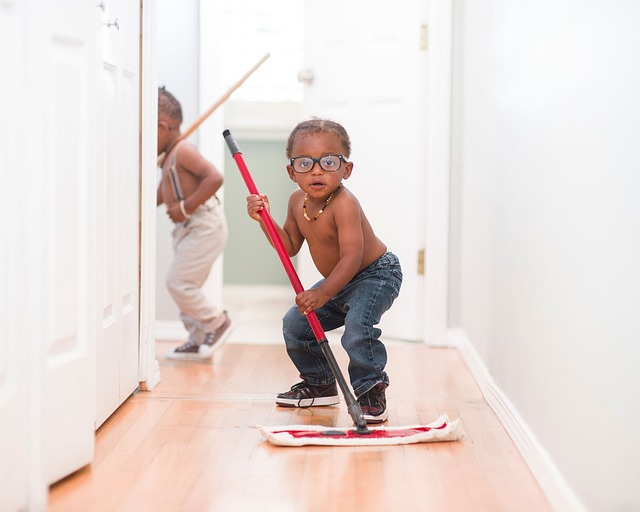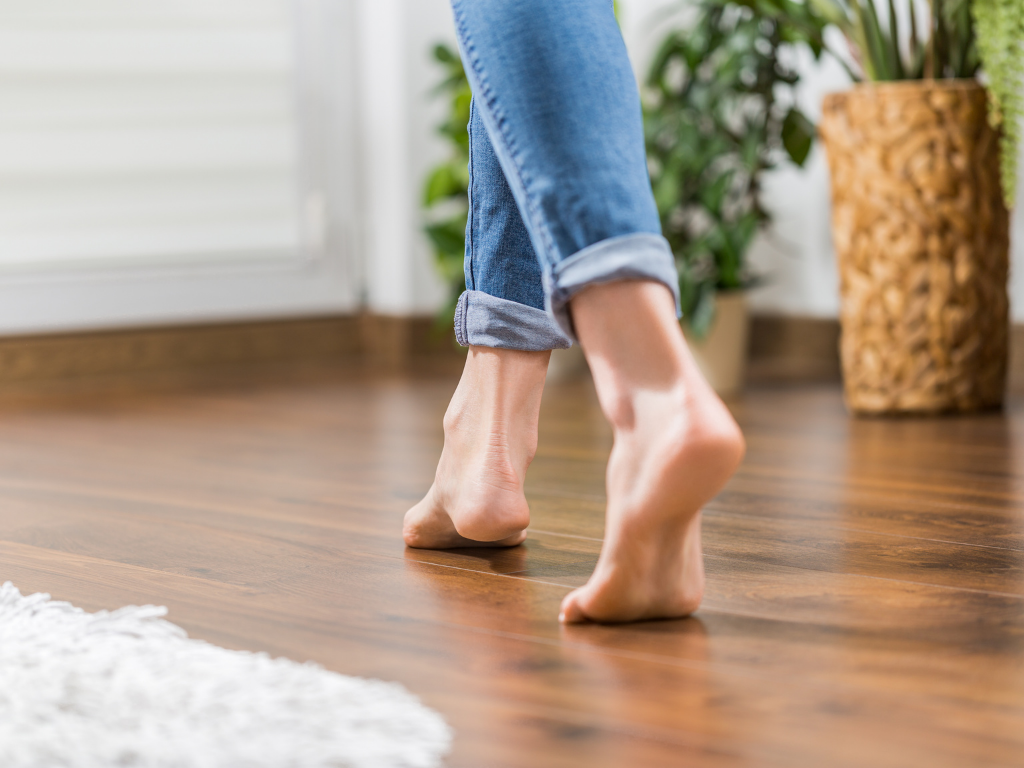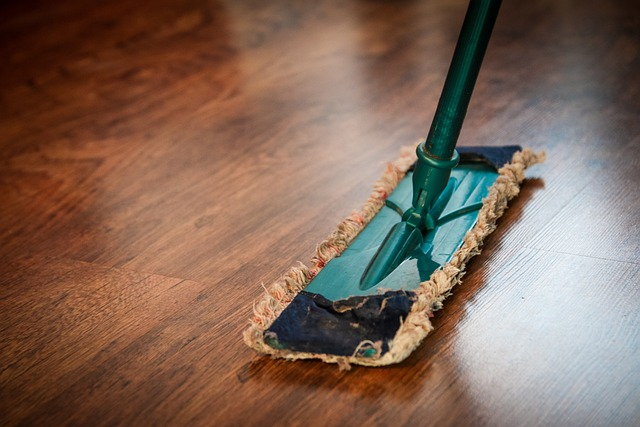Laminate flooring has become increasingly popular in recent years due to its affordability, durability, and ease of installation. However, maintaining and cleaning laminate floors are important to ensure their longevity and keep them looking their best. In this article, we'll discuss some essential tips, tools, and tricks for taking care of your laminate flooring.
As you know, CGI can visually mimic anything, thus it typically has a wood-like appearance with a top "photographic" layer made to seem like wood grain behind a clear protective wear layer. It is frequently mistaken for vinyl flooring, although the two are made of different materials; for example, vinyl tiles are made entirely of plastic, while laminate flooring is made, on average, of wood.
One of the key aspects of laminate floor maintenance is regular cleaning to remove loose dirt, dust, and debris. This can be easily achieved by sweeping, dry mopping, or vacuuming with a suitable device for hard-surface floors, which prevents the accumulation of grime and the formation of streaks and residue.
Another critical factor to consider is dealing with spills and messes promptly. Liquids can potentially damage laminate flooring if left to sit for too long, so it's essential to wipe up any accidents immediately with a mop or cleaning cloth to avoid stains from setting in.

Laminate flooring has gained popularity amongst homeowners due to its attractive appearance and cost-effectiveness. It offers the look and feel of a genuine hardwood floor, tile, or stone flooring without the hefty price tag. Furthermore, laying laminate flooring is a practical choice as it's easy to install and maintain, making it an appealing option for many different rooms in a home.
One of the significant advantages of most laminate floors is their durability. Laminate planks are made with layers of high-density fibreboard, which provides strength and is resistant to wear and tear. Additionally, the surface layer is designed to withstand scratches, stains, and fading caused by sunlight, making it suitable for high-traffic areas such as hallways and living rooms.
Laminate flooring is a versatile choice, as it comes in various styles, colours, and textures to make it look more real to the look of solid wood flooring. This wide selection of wood floors allows you to find the perfect match for your home's interior design aesthetic.
The installation process is relatively simple, with a click system option that make it a viable option for DIY enthusiasts. If you are not confident at DIY, don't worry, there are many professional flooring experts (such as Floor Coverings Local) that are experts at installing laminate flooring.
The best flooring for underfloor heating is one that can efficiently conduct heat and not hinder the performance of the heating system. If you lay laminate flooring it can work well as long as it has a suitable thickness and is installed correctly with the heating system.
The ease of maintenance makes laying laminate flooring an attractive choice for busy households needing hard wearing flooring in any room. It requires minimal upkeep to keep it looking pristine, with routine cleaning and occasional damp mopping being sufficient. Additionally, since the wood top surface is sealed, it is resistant to spills and can prevent allergens, dust, and microbes from being trapped within the material.

Laminate flooring is one of the easiest floors to clean and maintain due to its protective top coat. For daily cleaning, use a soft bristle brush, dust mop, or vacuum to remove dust and dirt particles before they damage the surface of the floor. Avoid using steam cleaners or wet mops, as they can cause damage to the laminate material.
Scratches can detract from your laminate flooring's appearance, so it's essential to take measures to prevent them. Place furniture pads under the legs of chairs and tables to minimise scratching caused by movement. Additionally, place doormats or area rugs at the entrance of your home to capture dirt and small stones before they come into contact with your floor.
Ensure you clean up spills immediately to prevent stains or residue from forming on your laminate floor. For best results, use a microfibre cloth or a sponge to remove any liquid, then dry the area thoroughly. For stubborn stains, use a laminate floor cleaner or a mixture of warm water and mild detergent.
Aside from daily cleaning routines, maintaining the shine and appearance of your laminate floor requires periodic deeper cleaning. You can use laminate floor cleaners or a homemade solution, such as a mixture of water and vinegar. Remember to use a damp mop – not a wet mop – to prevent damage from excess water. Finally, avoid using harsh chemicals or abrasive materials to preserve the floor's protective top coat.

When deep cleaning laminate floors, it is important to select proper cleaning products that won't damage the surface. Avoid abrasive cleansers, as they can scratch or dull the floor. Instead, use dedicated laminate floor cleaners or create a DIY solution with natural ingredients such as vinegar, water, and a few drops of mild liquid soap.
Additionally, use microfibre mops or cloths to apply the cleaning solution, as they effectively pick up dirt and grime without causing streaks .
Before wet mopping, remove loose debris using a vacuum cleaner, broom, or dry microfibre mop. This will make the cleaning process more efficient and reduce the risk of scratching the floor with dirt particles.
When mopping, be cautious about the amount of water used, as excessive moisture can damage laminate flooring. Dampen the microfiber mop or cloth with the cleaning solution but avoid soaking it. Start mopping from one end of the room and work your way towards the exit, being careful not to step on the cleaned areas. This way, you'll maintain the shine and longevity of your laminate floors.
For stubborn stains, mix equal parts vinegar and water in a spray bottle, and lightly mist the stained area. Let it sit for a few minutes and then gently scrub using a soft cloth or sponge. Once the stain is removed, wipe the area with a damp cloth to rinse off the vinegar solution .

Extending the life of your laminate flooring requires proper care and timely repairs when issues arise. In the first row of this section, we will cover minor scratch repair and caring for water damage to keep your floors looking great.
Sometimes you may find minor scratches on your laminate flooring due to daily wear and tear. While laminate is typically quite durable, accidents can happen. To fix minor scratches, follow these simple steps:
Water damage can be one of the most challenging issues for laminate flooring, as it can cause warping or swelling. If you notice signs of water damage, such as cupping or buckling, it's important to address the issue as soon as possible. Here's what you can do:
By attending to minor scratches and water damage, you can help maintain the appearance and longevity of your laminate floors.
In summary, proper maintenance and cleaning are essential for keeping your laminate floors looking great and lasting for years. Start by regularly sweeping, dry mopping or vacuuming to remove loose dirt, dust and debris. Avoid using too much water when cleaning, as it can cause damage to laminate flooring. Instead, opt for a damp mop and use a suitable cleaning agent if needed, being cautious to dilute them according to the manufacturer's instructions.
For tough stains like candle wax or ink, consider using common household items like ice to help with the cleaning process. When it comes to minor scratches, having a colour-matching wax pencil on hand is a practical solution. To prevent scratches on your floors, consider adding self-adhesive felt pads to the bottom of your furniture legs.
Lastly, it's important to remember that not all laminate floors are the same. Always refer to the manufacturer's guidelines when considering which cleaning products or methods to use in your house and on specific floors. By following these tips and the manufacturer's guidelines, you can ensure that your laminate floors remain in excellent condition for years to come.